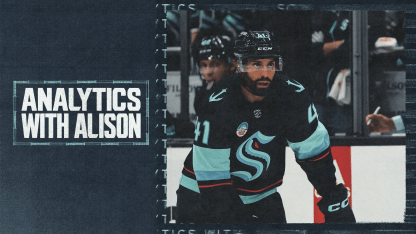Pierre-Edouard Bellemare knew quite a bit about the Seattle Kraken even before signing a one-year contract with the team this summer. The center played for Dave Hakstol when both were with the Flyers organization; he played with Andre Burakovsky in Colorado; and for 15 years, the Frenchman has lived a few houses down from friend and Kraken assistant captain Adam Larsson in Sweden.
But beyond the personal connections, there’s a bite to Bellemare’s game on the ice and the special ability to motivate and mentor off the ice that makes him a solid addition to the Seattle roster.
“I think (Bellemare) brings a lot,” Larsson said. “Even in the dressing room (he is) a veteran presence. He's vocal and obviously he’s a proven steady center. I'm sure he will like the way we play here and how the team works together. I have only good things to say about him.”
What should we expect from one of the newest Kraken players?
Let’s dig in.
Bellemare has primarily played in a bottom six role throughout his career and responds with a solid defensive effort. According to Sportlogiq, last season when he was playing with the Tampa Bay Lightning, Bellemare ranked in the top 10-percent of the league in overall defensive play and protecting high danger areas of the ice.
If we look at his impact on opponents’ shot rates across the defensive zone it’s clear that he was part of a line – “Belly” played mostly with Corey Perry and Pat Maroon last season -- that effectively kept other teams’ chances to the outside. The chart below from HockeyViz.com marks where on the ice opponents shot the puck at a rate higher than league average (shaded red) and at a rate lower than league average (blue).


























